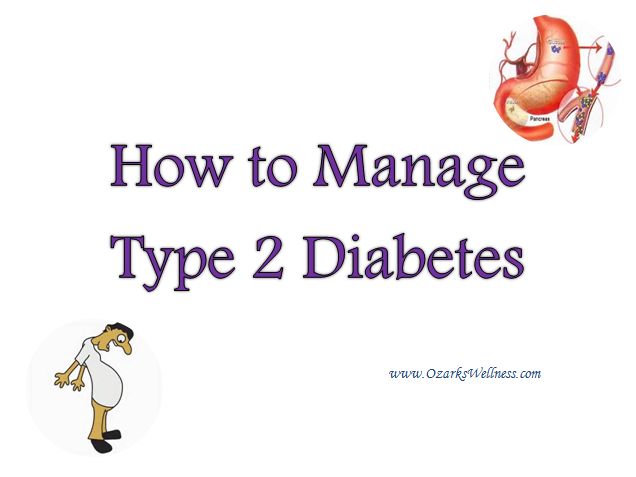
Type 2 Diabetes Mellitus is probably one of the top “chronic” conditions that I see today in my work in the clinics. I have some guesses about why it is so common right now:
- processed food easily available
- fast food also easily available
- many people appear to be addicted to sugar
- lack of exercise
- people are over-stressed (some working 80 hours per week)
- bad economy (some people not working)
- food pantries stocked with macaroni and cheese etc.

With diabetes, the pancreas stops producing insulin and your body is not able to properly use the insulin which is present in the body. Type 2 diabetes mellitus is a condition in which the body cells develop resistance to insulin and fail to use it properly. Type 2 diabetes mellitus is more common amongst overweight and obese adults over 40 years of age. The disorder can also be referred to as non-insulin-dependent diabetes mellitus (NIDDM) or adult-onset diabetes mellitus. If it is left untreated, NIDDM can lead to a series of other serious illnesses such as blindness, nerve damage, kidney failure, heart disease, erectile dysfunction (in men).
Some common symptoms include:
- excessive thirst
- increased appetite
- tiredness
- frequent urination
- unexplained loss of weight
- blurred vision, skin irritation/infection, constant weakness and loss of strength
- slow or delayed healing of cuts, wounds
- dizziness or blacking out
For quite some time I have had a big interest in seeing people improve their health by utilizing all their possible solutions. Many people report side effects and/or complications from some of the medications prescribed to help with this condition, such as, diarrhea, increased appetite, lack of energy, mood swings etc. There are easy ways to achieve your wellness goals that may not necessarily involve a pill or a needle.
Would you be open to learning about these?
- Exercise
- Swimming
- Walking (20 – 30 minutes daily)
- Jogging
- Running
- Cycling
- Dancing
- Aerobics and Water Aerobics
- Stretching
- Strength Training
- Any movement is good. It should be consistent and you should feel your heart rate increase.
- Biofeedback
- Hydration
- At least 64 ounces of water daily
- Essential Oils
- Grapefruit Essential Oil
- Dill Essential Oil
- Cinnamon Essential Oil
- Coriander Essential Oil
- Ylang Ylang Essential Oil
- Clary Sage Essential Oil
- Eucalyptus Essential Oil
- Geranium Essential Oil
- Massage
- Relaxation Techniques
- Deep Breathing
- Mindfulness (Take mindful walks)
- Nutrition, Supplements and Herbs
- Greek clover
- Chromium
- Garlic
- Green Tea
- Parslane Seeds
- Ginsing
- Mango Tree Leaves
- Cayenne Pepper
- Bitter Gourd
- Chitosan
- Garcinia cambogia (hydroxycitric acid)
- Chromium
- Pyruvate
- Germander
- Momordica charantia (Chinese bitter melon)
- Sauropus androgynus (sweet leaf bush)
- Chitosan
- Aristolochic acid
- Magnesium
- Vanadium
- Citrus Pardisi
- Neem Tree Leaves
- Indian GooseberryString
- Bean Pod Tea
- Curry Leaves
- Asparagus
- Blueberries
- Red Grapefruit
- Coenzyme Q10
- Beans
- Fish
- Cranberries
- Apple Peel
- Brewer’s yeast
- Buckwheat
- Broccoli and other related greens
- Cinnamon
- Banaba
- Vitamin C
- Cloves
- Coffee
- Okra
- Peas
- Fenugreek seeds
- Saw Palmetto
- Aloe
- Sage
- Huckleberry
- Gymnema
- Zinc
- Watermelons
- Oatmeal
- Methi
- Jambul
A person suffering from diabetes should have limited amount of carbohydrates and fats along with moderate amount of protein in the diet. High-fiber diet like vegetables, whole wheat products, oats, whole legumes prove to be more beneficial. Let’s look at what all should be had and what all should be avoided.
- Avoid products made from refined wheat flours.
- Eat as much salad as possible, but without rich, creamy, high-fat salad dressing.
- Fruits can be taken as recommended by dietitian; avoid juices.
- Consume fruits a couple hours before or after meals.
- Prefer oats porridge along with milk in breakfast.
- In case you cannot have coffee/tea/milk without sugar, substitute it with honey.
- Avoid whole milk, egg yolk, red meats, and high-fat foods.
- Prefer skimmed milk, egg whites, de-skinned chicken.
- Avoid visible fats like ghee, oil, butter in your daily diet.
- Include anti-diabetes foods in your diet, like bitter gourd, string beans, onion, garlic, cucumber, etc.
- Restrict intake of meat and salt in your diet. It will help control body weight and diabetes.
- No restriction on soy and fish for patients suffering from diabetes.
- Avoid white bread, potatoes, sweets, rice, and sugary foods.
Preventative Measures
Here are some prevent measures to keep diabetes at bay:
- Exercise on a regular basis. It keeps the person fit and assists in controlling diabetes. Jogging, brisk walking, swimming, or light exercising can be beneficial.
- Never walk bare feet as it can result in injury, which might take ages to heal.
- Never miss meal after insulin or oral hypoglycemic drug.
- Unless recommended by your physician, do not alter the dosage of your anti-diabetes medication.
- Make a fixed-time schedule for your meals, and try not to deviate from it, if possible.
- Avoid rich, starchy, oily food as it is difficult to digest.
- Do not consume heavy meals. Instead, distribute your meals in smaller courses across the day.
- Try not to take stress, it will worsen the situation.
- Check blood glucose levels frequently.
Please consider contacting us for more information and encouragement to attain your wellness goals.

http://www.webmd.com/diet/default.htm
http://www.webmd.com/diabetes/type-2-diabetes-guide/natural-remedies-type-2-diabetes
https://www.verywell.com/natural-remedies-for-diabetes-88225
http://www.all-about-beating-diabetes.com/natural-cures-for-diabetes.html
http://www.naturalnews.com/027252_diabetes_oil_remedies.html

Recent Comments